Wismar is one of the historic North German Hanseatic cities, where you can see many old buildings in the so-called Brick Gothic architecture. The architecture is typical of the once prosperous cities of the Hanseatic League, and among other things, the three major churches radiate the atmosphere from the city’s economically thriving commercial history.
The churches of St. Georgen and St. Nikolai stand beautifully as the great old churches that are. The third of Wismar’s three mighty churches, the Marienkirche, was destroyed during World War II and is today it is only the church tower with the contours of the other buildings which remains. It provides an interesting perspective in the old center of the city.
Wismar was once one of Sweden’s most important cities in their North German possessions, and in Wismar the Swedes have made their greatest mark in the region, where not least the famous Swedish heads can be seen in the city and on the water on a harbor cruise. The Bay of Wismar and the harbor are added dimensions to a visit to the Hanseatic city.
There are many interesting places to see around the city. Wismar is a good starting point for trips to other Hanseatic cities such as Lübeck and Rostock. There is great nature as well, and an excursion to the German Baltic Sea coast is a good choice. Towns like Heiligendamm and Kühlungsborn are examples of fashionable seaside resorts close by.
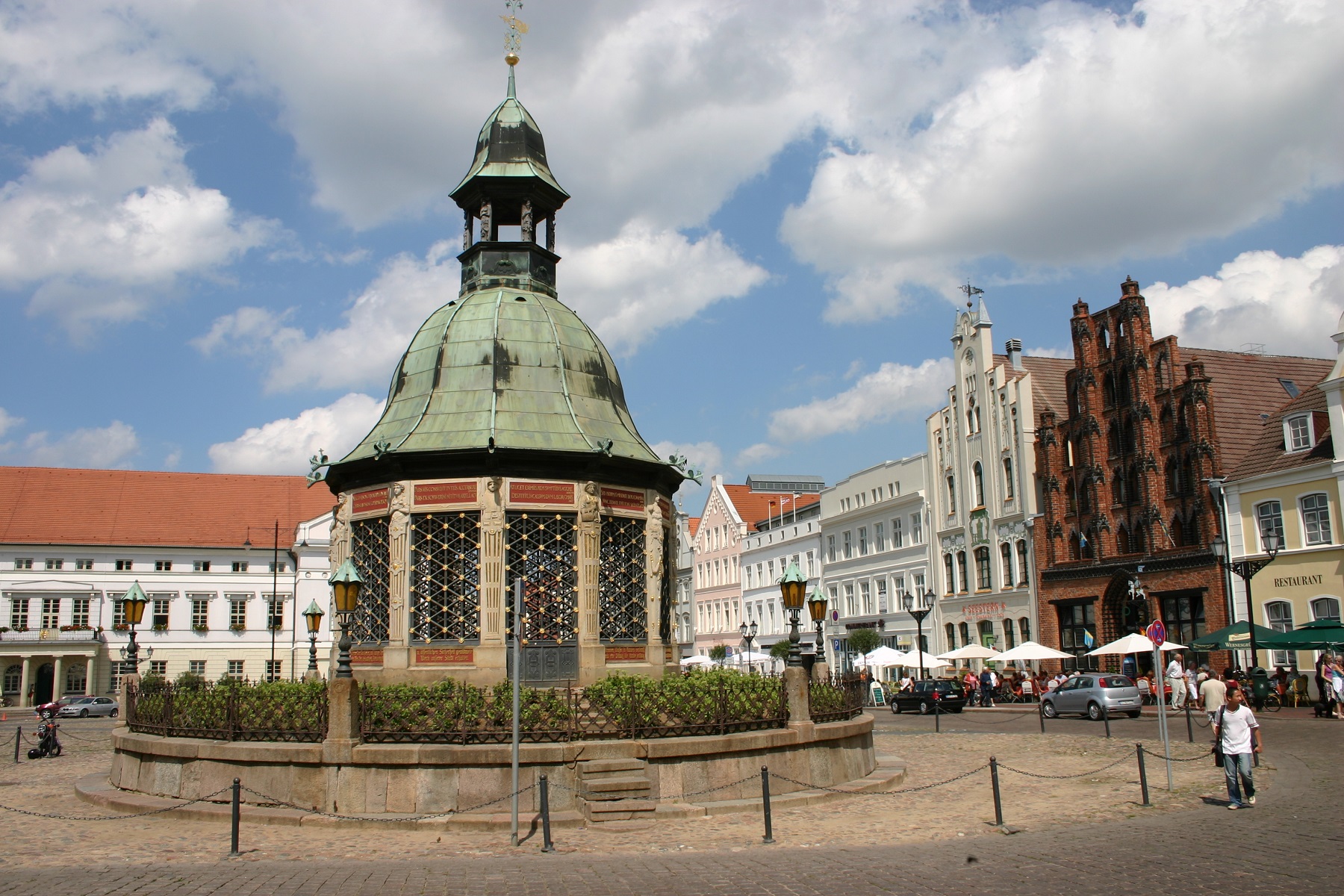
Wismar’s market square is one of the largest in Northern Germany and is surrounded by old, beautiful buildings. You can enjoy it all at the many cafes and restaurants here. In season, there is a lot of activity here with outdoor dining, and the city’s business district is just a few steps away.
The street Am Lohberg is one of the most cozy ones in the center of Wismar. With its location close to the old harbor, you can think back to the historic heydays of the area, where the trade flourished here. Today it is a lovely street with old houses, cafes and restaurants.
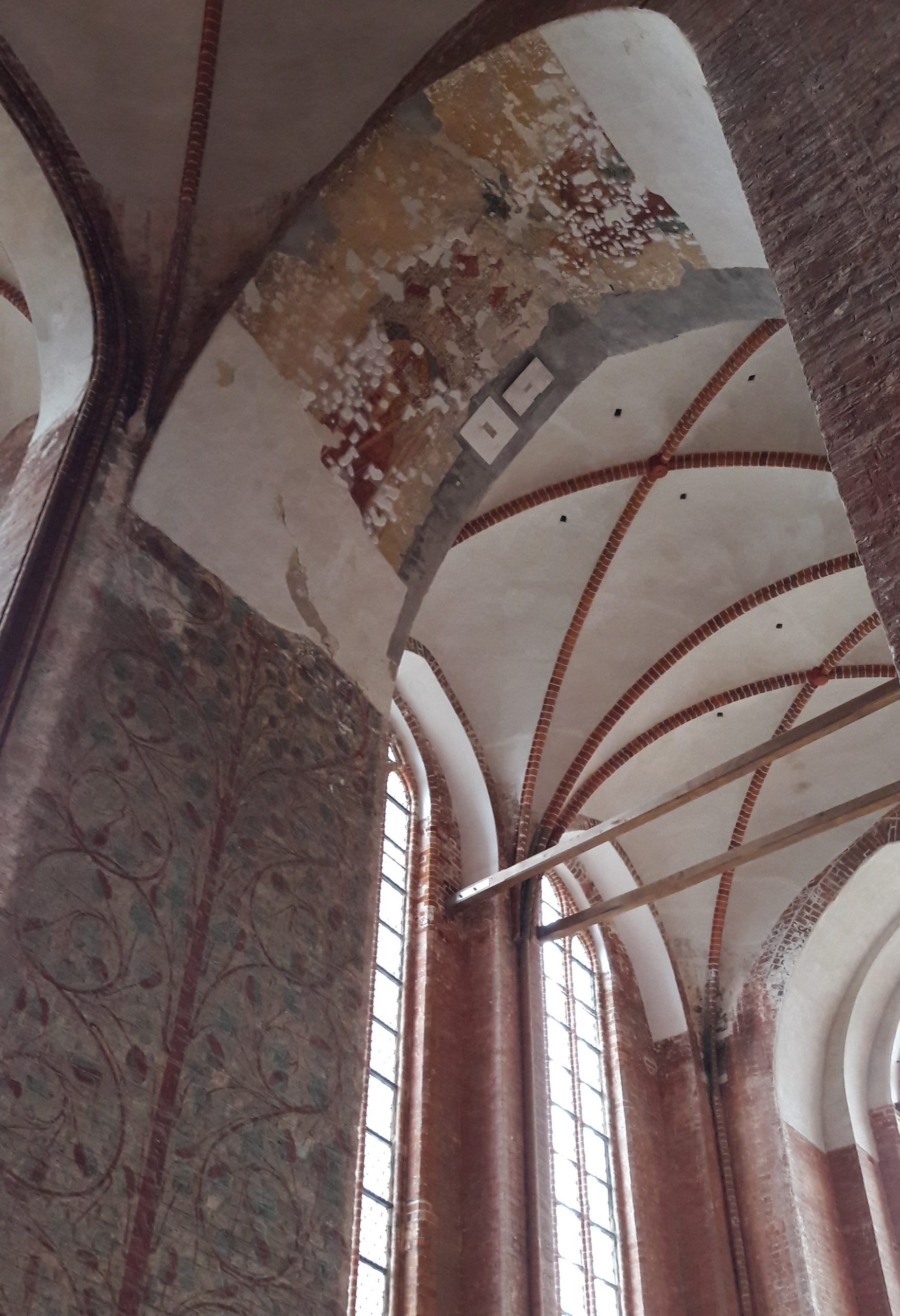
During World War II, this great church was bombed to a majestic ruin, largely untouched until 1990, when reconstruction work began. Georgenkirche has now been restored to its original appearance to the delight of the town’s citizens and the many visitors.
Wismar’s city history museum is housed in the Schabbellhaus building. The museum mainly addresses the periods when the city was part of the Hanseatic League and during the Swedish rule. In the exhibition you can see the only preserved of the original Swedish heads that were and are among Wismar’s landmarks.
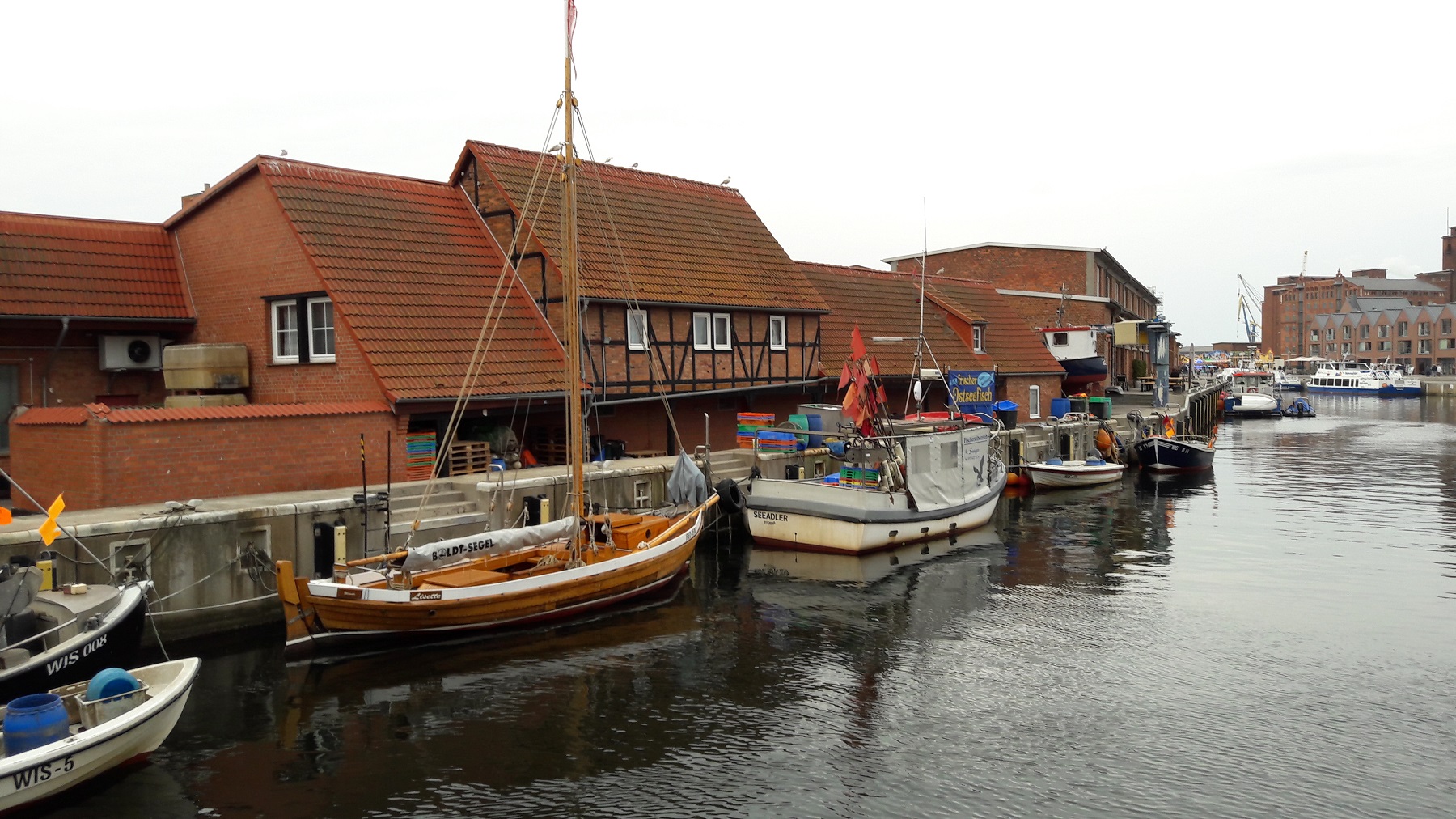
Wismar’s location to the sea and with natural protection from the bay, Wismarer Bucht, already made Wismar an ideal trading place from the foundation of the city. The harbor naturally played a central role, and the Old Harbor is a glimpse of the time during the Hanseatic League. From here you can also board a harbor cruise and among other things. see how the Swedish heads originally sat on poles at the entrance to the harbor.
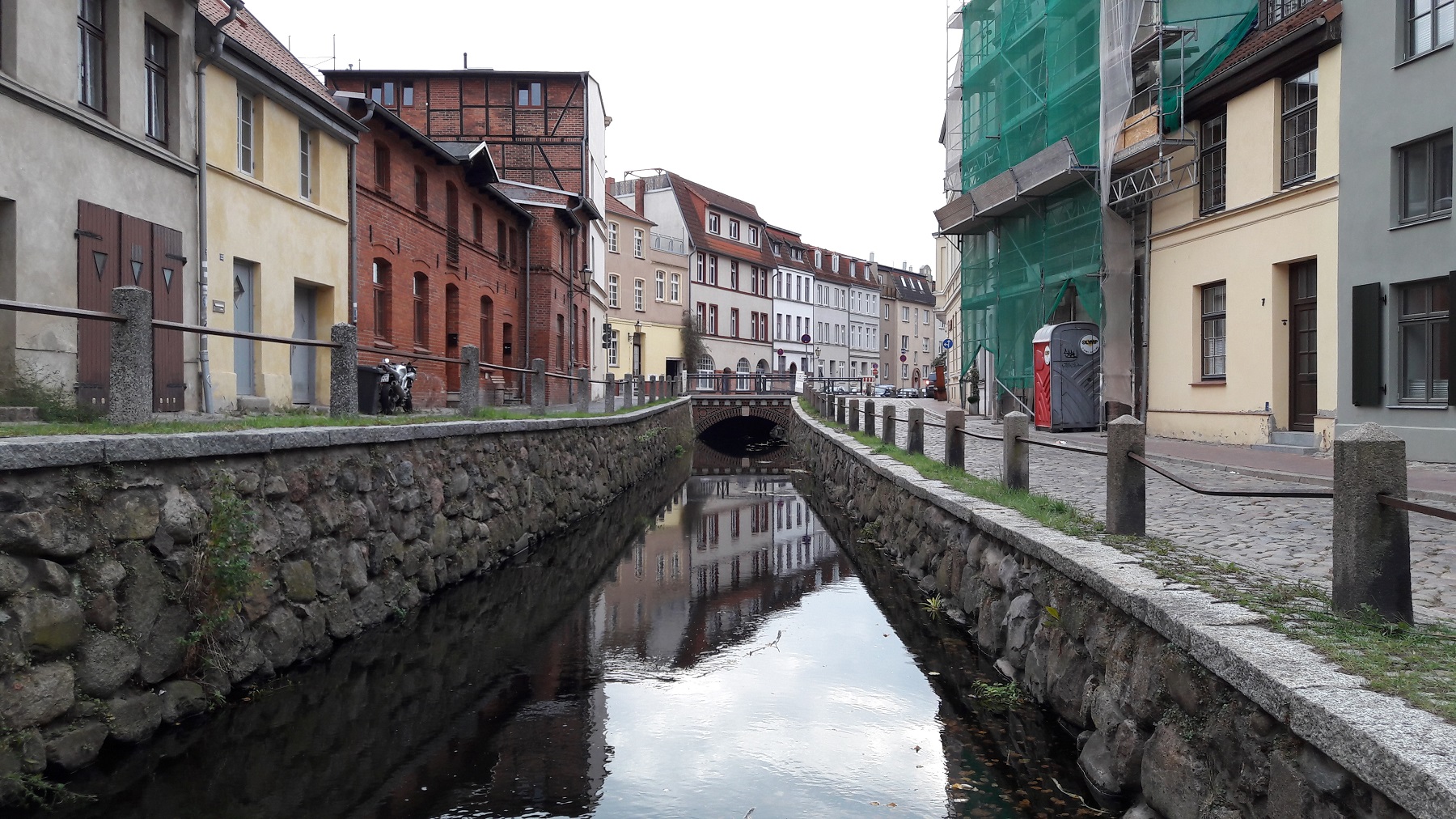
Frische Grube is one of Wismar’s oldest streets. It has been named after the man-made stream in the middle of the street. Today, the water and the street form an lovely atmosphere in the old town. It is wonderful to walk in the street and its side streets.
St Nicholas Church is considered a late Gothic masterpiece in the region. The church was built as the church of fishermen and sailors. The three-nave church was built 1381-1487 as the church of the fishermen and sailors. You can see the late Baroque high altar from 1774 in the impressive church interior.
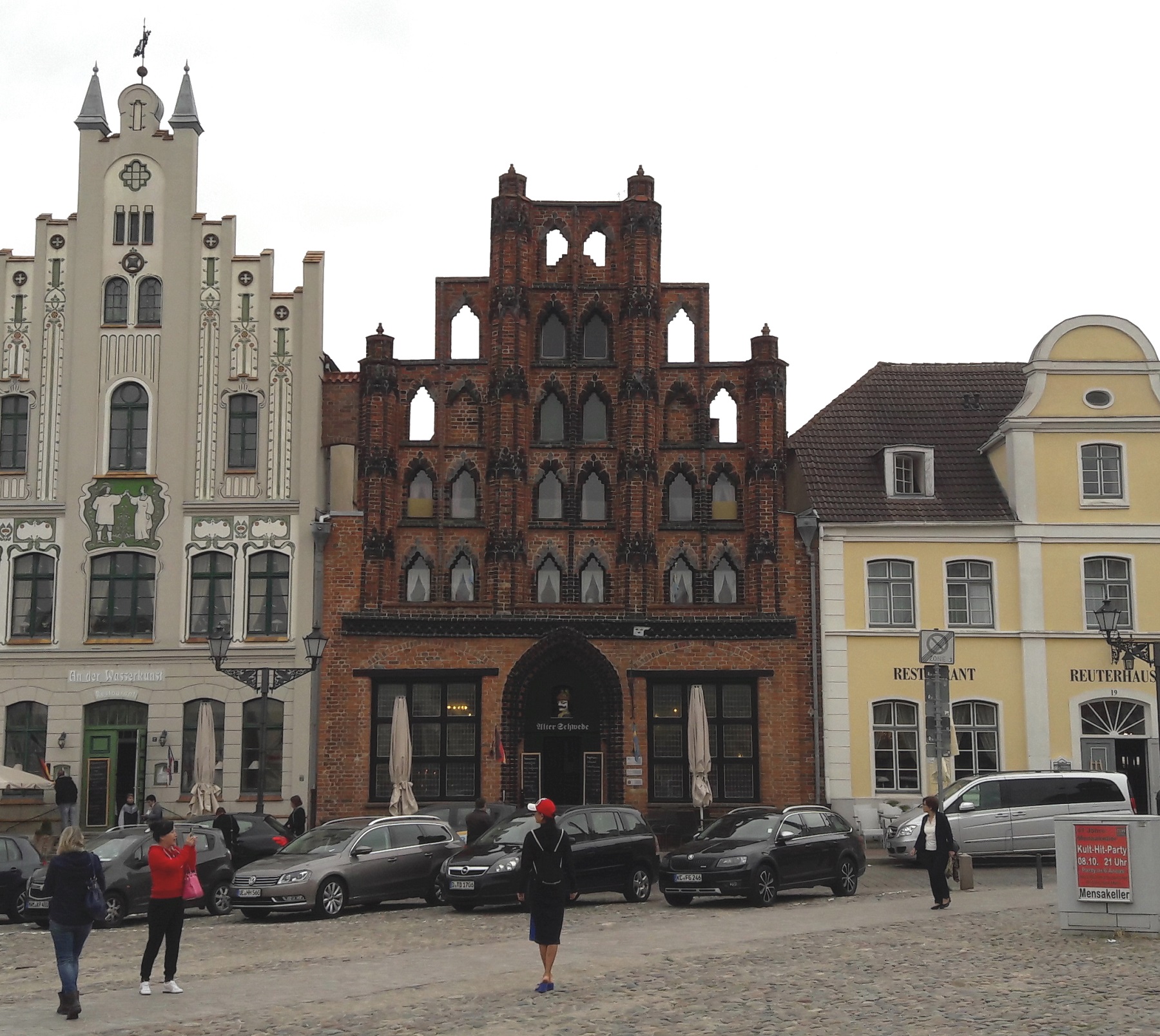
The brick Gothic building named Alter Schwede stands at the market square. Alter Schwede is the oldest building on the Markt, built in 1380. The house is thus the oldest townhouse in Wismar. Originally, there was a residence and shop on the ground floor, while the rest of the house served as a warehouse.
The Water Gate is Wismar’s old city gate towards the harbor. It was built in the so-called Brick Gothic, and the gate is the last preserved one of the original five gates in the city’s defensive wall. The gate was built in 1450.
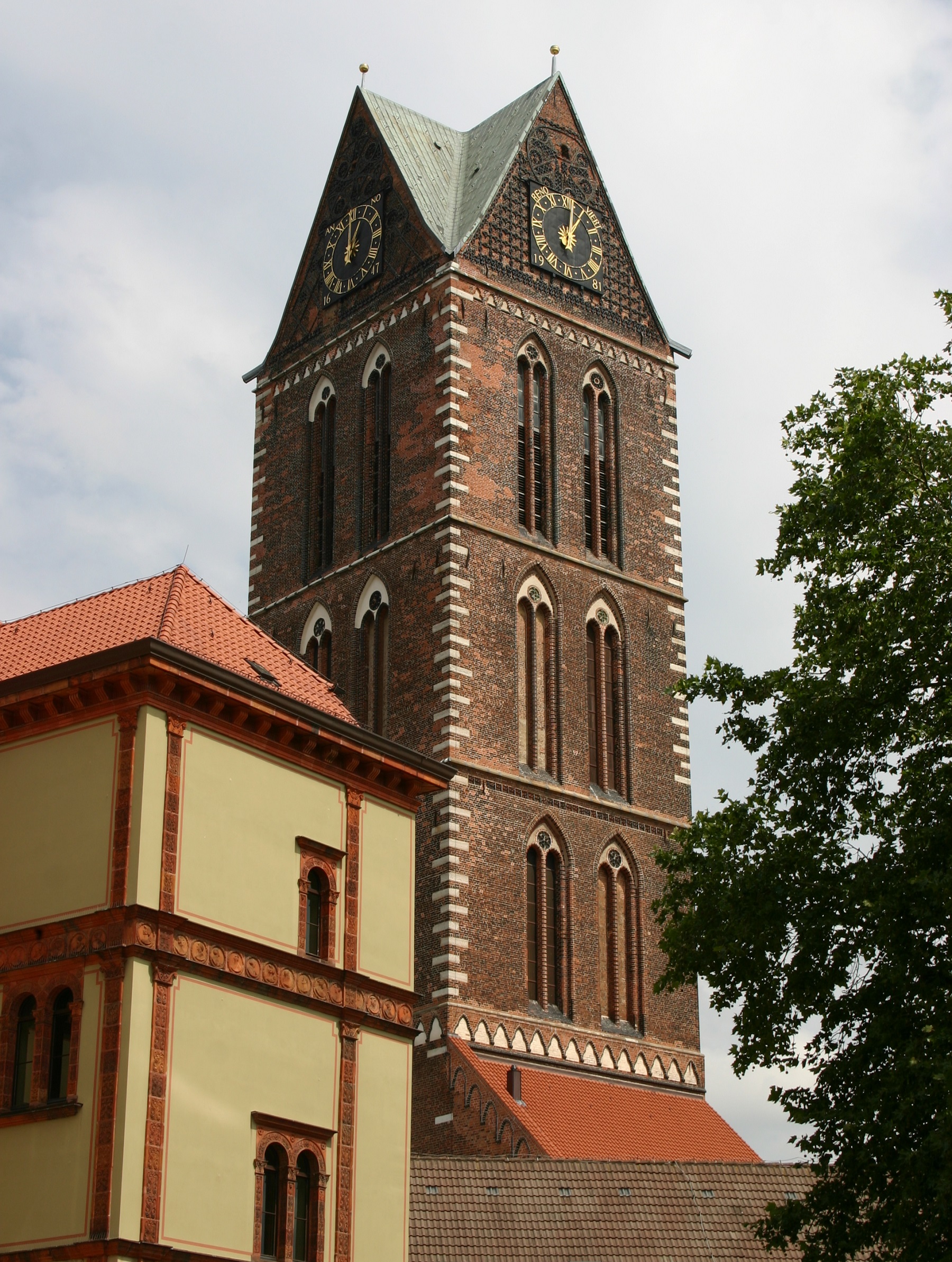
All that remains of the formerly mighty Marienkirche is the church tower. Marienkirche was known as one of Northern Germany’s foremost brick buildings, but after extensive damage caused by World War II, the church with the exception of the tower was blown away in 1960.
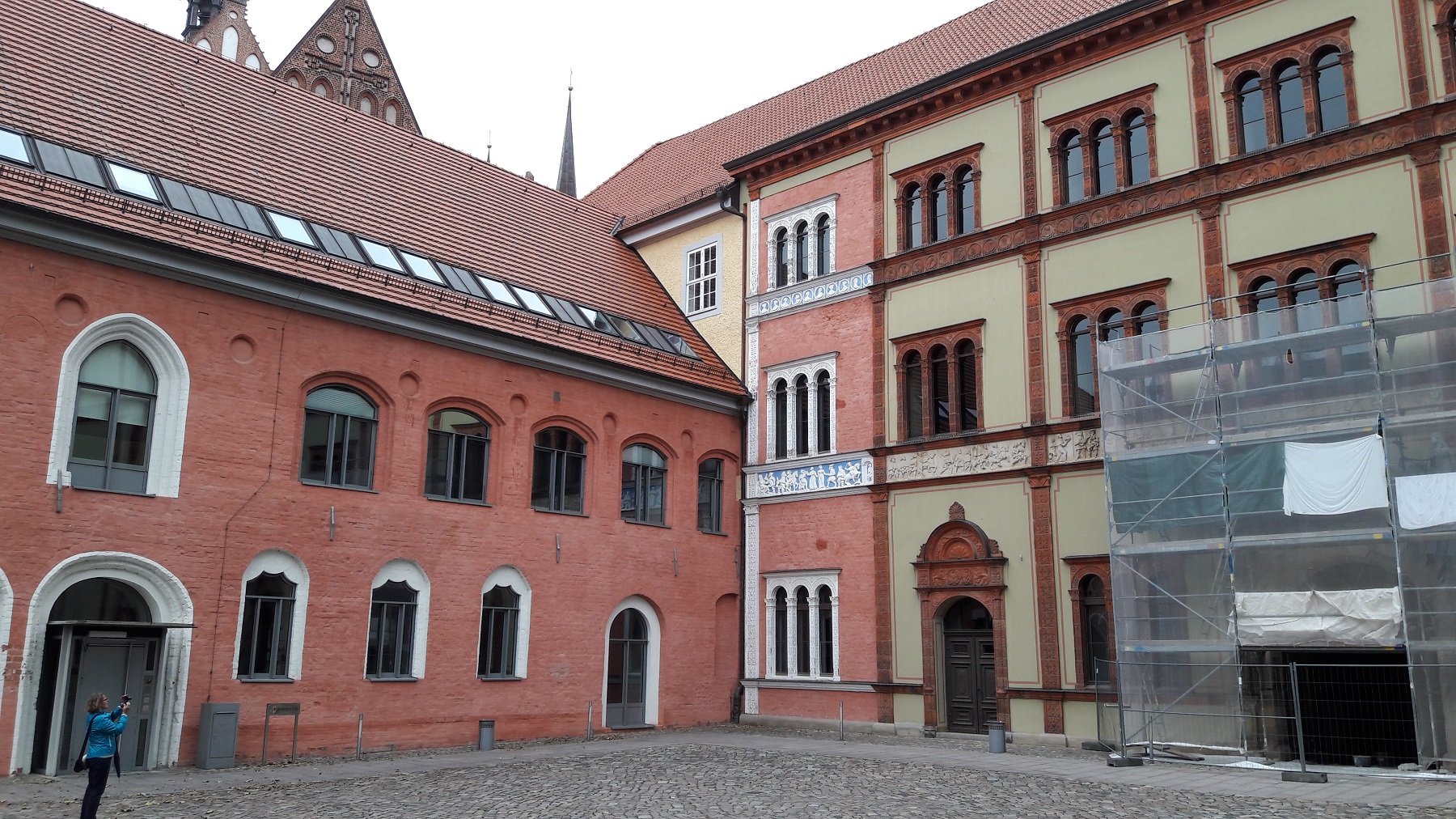
The Fürstenhof was the seat of the dukes of Mecklenburg, and it consists of two parts, the western wing from 1512-1513, which is called Old House/Alte Haus and New House/Neue Haus from 1553-1555.
Lindengarten is a small park immediately next to Wismar’s Old Town. There is an old water towe in the park, Alter Wasserturm, which was built as a defense tower in a part of the old city wall.
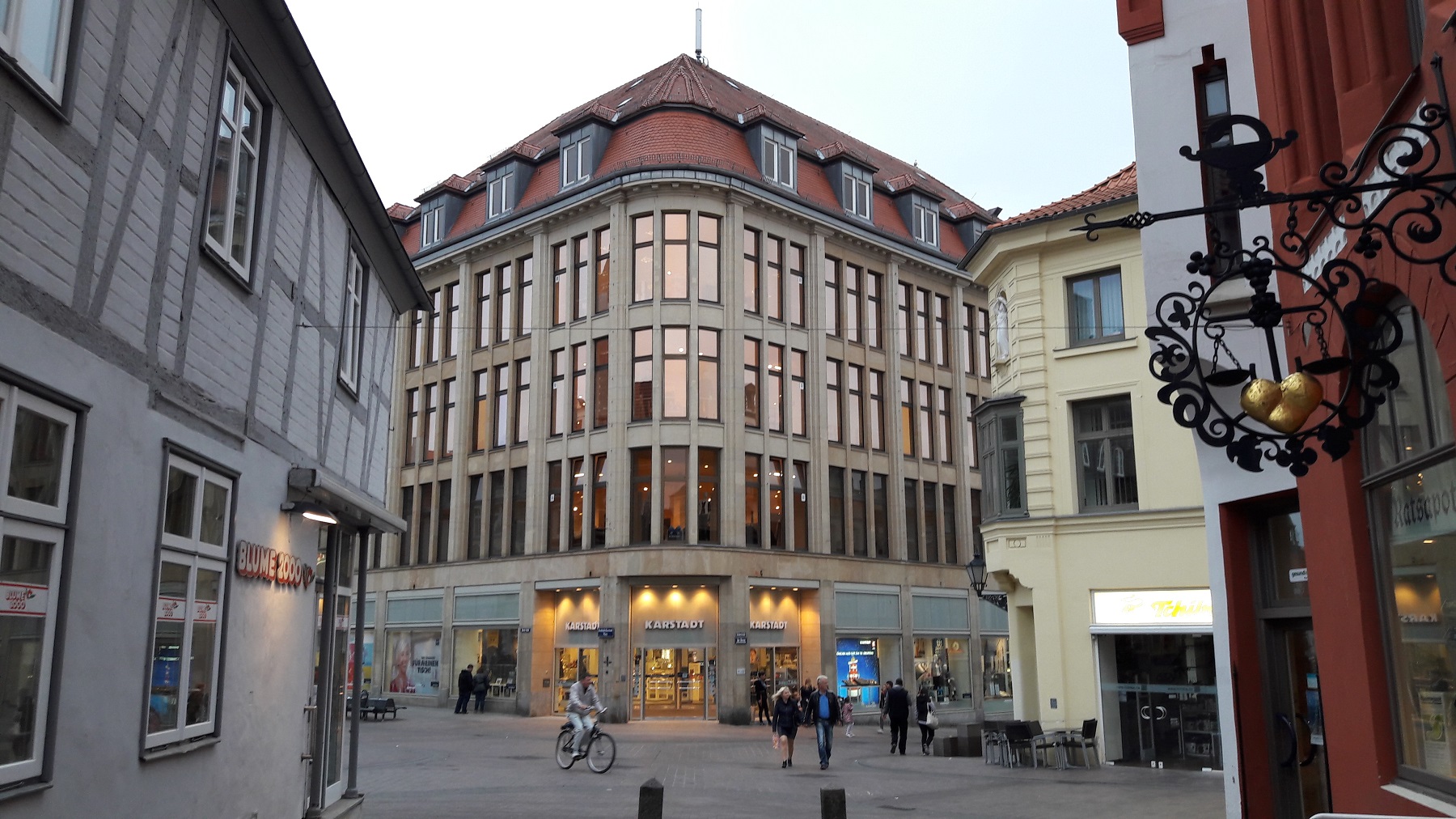
Here, in the middle of Wismar’s pedestrian streets, is the first page of a chapter in German retail history. In 1881 Rudolph Karstadt founded his first store in what has now developed into an empire of department stores in most major German cities. In 1881, Karstadt opened the doors in Wismar with only one employee.
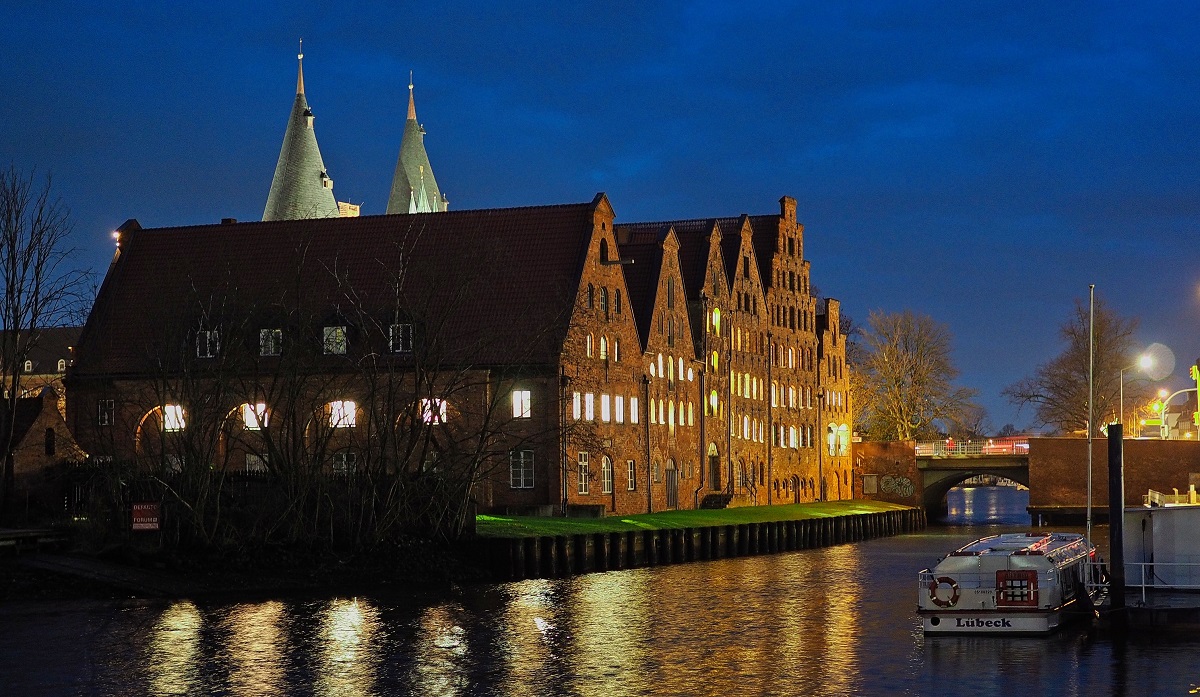
Lübeck was the queen of the Baltic Sea region’s Hanseatic cities, and it still is, and that is not without reason. Majestic churches and countless old houses, monasteries and other medieval buildings are evidence of the immense wealth that made the city flourish over the centuries.
Güstrow is a town in Mecklenburg-West Pomerania with a city center that has been built over centuries. The city is today known for its lovely Renaissance castle. In addition to the castle, there are many other sights in Güstrow, where you can easily walk in the old town with its short distances.
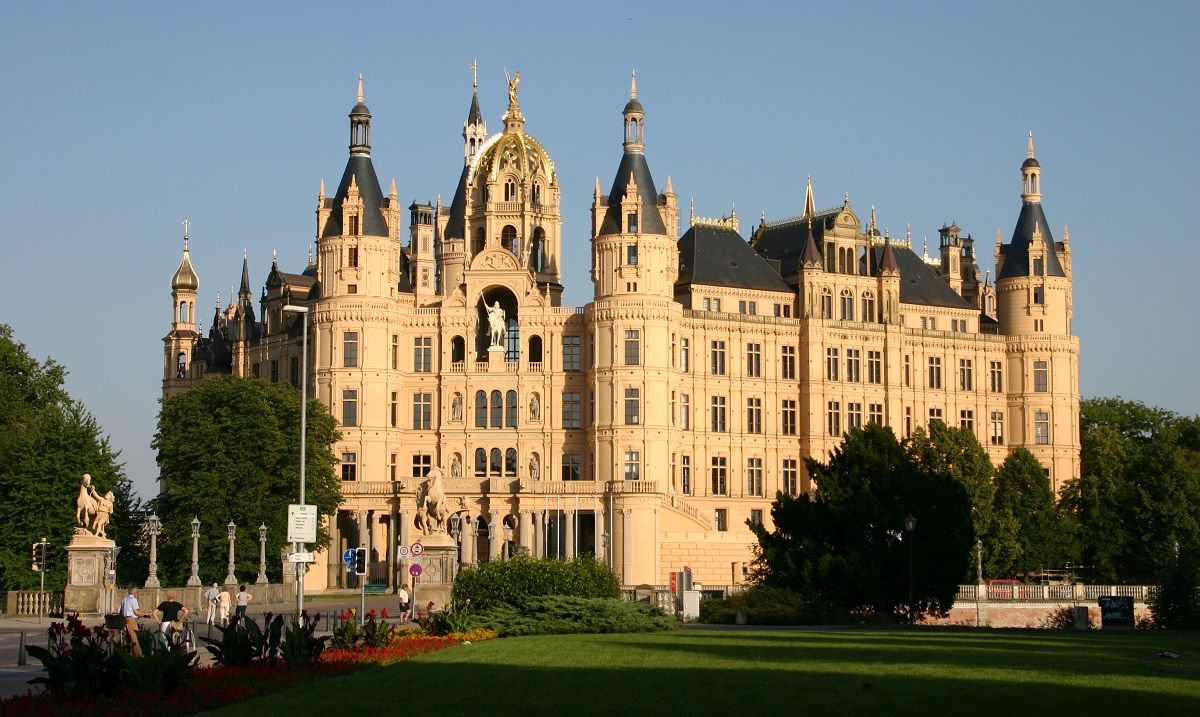
Schwerin is the capital of the state of Mecklenburg-Western Pomerania and the historic residence city of the dukes and grand dukes of Mecklenburg-Schwerin. Schwerin Castle is a true fairy tale construction with its many towers and spires. It is a must visit during a walk in the city, but many other large buildings are also here within a comfortable walking distance.
Rostock is one of the northern German cities, which grew with the Hanseatic League’s trade and financial success, and its historical wealth has been the source to a lot of constructions, that can be seen today. There are large churches, the region’s oldest university and much more.
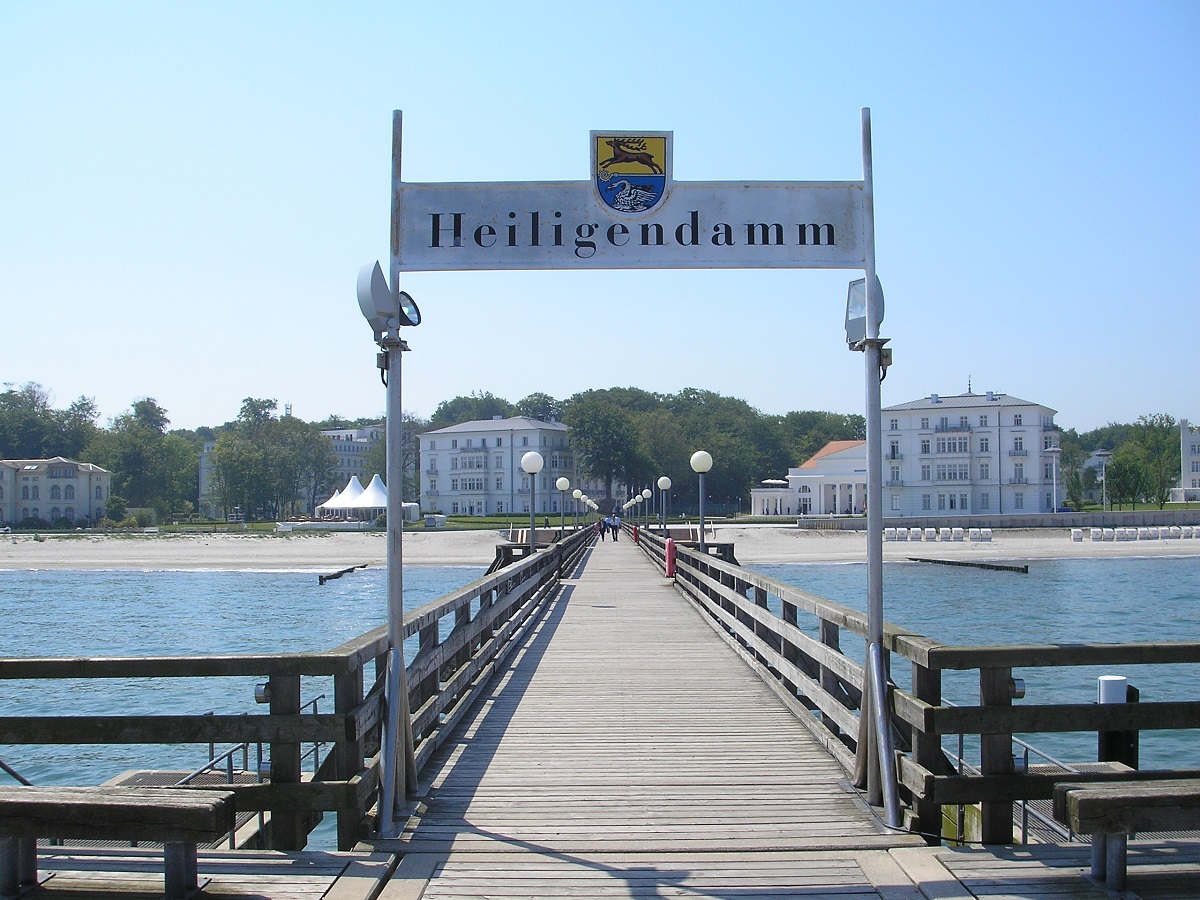
Heiligendamm is a spa town, founded as such already in 1793. This makes it the oldest of its kind in Germany and continental Europe. In Heiligendamm you can enjoy the beaches and the beautiful spa buildings that surround the Grand Hotel Heiligendamm.
Kühlungsborn is a popular seaside resort with a lovely sandy beach as the center of many of the summer activities. Here you can go for a walk in the Baltic Sea on the city’s 240 meter/780 foot long pier. The pier is like a bathing jetty and starts from the city’s central waterfront. You will also find one of the few preserved sea border towers that the GDR built in the early 1970s.
Krämerstraße, Lübsche Straße
karstadt.de
Krämerstraße, Hinter dem Rathaus, Altwismarstraße
Tierpark Wismar
Am Tierpark 5
tierpark-wismar.de
Wonnemar
Bürgermeister-Haupt-Straße 3
wonnemar.de
Hafenrundfahrt
Am Hafen
reederei-clermont.de
Wismar’s prehistory was under the name of Reric, which was a Slavic or Saxon trading ground near the present city. The Danish king Godfred destroyed Reric in 808 and took the place’s merchants to Hedeby, which was the political center of Denmark at the time.
Reric’s good location on the Baltic Sea with natural protection of the Bay of Wismar made the place attractive, and a boatyard named Wismar appeared and was mentioned for the first time in 1147. From 1211 there is a document authorizing Schwerin’s inhabitants to use the port of Wismar, but this port exact location is unknown.
Today’s Wismar is believed to have been founded by the Mecklenburg Duke Henrich Borwin I in 1226, and not many years later, rights were introduced after Lübeck as an example. In the first decades, the settlements around Nikolaj Church and Maria Church grew together, and the city quickly expanded to what is today the center of the old town.
The trade flourished quickly for the well-located city on the Bay of Wismar, and in 1259 met, among others, envoys from Lübeck and Rostock in Wismar. They were to take steps against the increasing number of pirates, which posed a threat to the development of the northern German cities. The meeting was the start of establishing cooperation between the Vendean Hanseatic cities, which in the Middle Ages became important members of the Hanseatic League.
The population grew steadily, and around 1300 there were about 5,000 people living in Wismar. In 1350, the plague came to the city and about 2,000 inhabitants were affected.
The 1300-1500s became a time of both rise in city trade and internal strife. Thus, in the first half of the 1400s, there were political disputes, and after a defeat to Hansen’s navy against Denmark, naval commander Hinrich van Haren and Mayor Johann Bantzkow were executed in Wismar. The city had lost 12 ships to the Danish navy.
During the Thirty Years War, Wismar was occupied by Sweden in 1632. In the Westphalian Peace, entered into in the cities of Münster and Osnabrück in 1648, Wismar and considerable Pomeranian areas came under the Swedish crown. In 1653, Sweden established the supreme court in the country’s possessions on the south side of the Baltic Sea in Wismar.
During the Skåne War between Denmark and Sweden, Wismar was occupied by Denmark 1675-1680. After those years, the Swedes expanded Wismar with such extensive defense works that the city became one of the best-fortified shipping cities in Northern Europe. However, after Swedish defeat during the Great Nordic War in the early 18th century, the defense had to be shut down again.
The Swedish era was long overdue for the city, and it actually ended in 1803, when Sweden pledged the city to Mecklenburg-Schwerin for 99 years. At that time, about 6,000 lived in the city.
Throughout the 19th century, Wismar continued to develop as a trading town and the population numbered to around 20,000. In 1848 a railway line to Schwerin was opened and the network was continuously expanded over the following decades. In 1881, Rudolph Karstadt opened the store that would eventually become the Karstadt department store.
Between 1869 and 1904 the medieval city wall was demolished including gates and defense towers. The old defense system was thought to be a constraint to the city’s economic growth, and so Wismar was allowed to develop regardless of what had been the old city within the walls.
Like the rest of Germany, Wismar also became part of the Nazi regime of 1933 and later an active part of the war of 1939. Industries and the port were strategically important places in the city.
During World War II, Wismar was hit by twelve bomb attacks, which in total destroyed much of the old Gothic district; including two of the city’s three major churches. However, a special target was the Dornier aircraft factory in the port area. British and Canadian troops came to the city on May 2, 1945, and on July 1, they were replaced by the Red Army, and Wismar became part of the GDR for the following decades.
During the GDR, Wismar was expanded and the port became the country’s most important after Rostock Harbor. In 1990, Wismar regained its status of Hanseatic city, after which the city was officially named Hansestadt Wismar, which is reflected, for example, on the license plates of the city’s cars. Since then, the city core has undergone a restoration and partial reconstruction that has brought much of the city back to ancient glory to the delight of locals and visitors alike.
Overview of Wismar
Wismar is one of the historic North German Hanseatic cities, where you can see many old buildings in the so-called Brick Gothic architecture. The architecture is typical of the once prosperous cities of the Hanseatic League, and among other things, the three major churches radiate the atmosphere from the city’s economically thriving commercial history.
The churches of St. Georgen and St. Nikolai stand beautifully as the great old churches that are. The third of Wismar’s three mighty churches, the Marienkirche, was destroyed during World War II and is today it is only the church tower with the contours of the other buildings which remains. It provides an interesting perspective in the old center of the city.
About the upcoming Wismar travel guide
About the travel guide
The Wismar travel guide gives you an overview of the sights and activities of the German city. Read about top sights and other sights, and get a tour guide with tour suggestions and detailed descriptions of all the city’s most important churches, monuments, mansions, museums, etc.
Wismar is waiting for you, and at vamados.com you can also find cheap flights and great deals on hotels for your trip. You just select your travel dates and then you get flight and accommodation suggestions in and around the city.
Read more about Wismar and Germany
Buy the travel guide
Click the “Add to Cart” button to purchase the travel guide. After that you will come to the payment, where you enter the purchase and payment information. Upon payment of the travel guide, you will immediately receive a receipt with a link to download your purchase. You can download the travel guide immediately or use the download link in the email later.
Use the travel guide
When you buy the travel guide to Wismar you get the book online so you can have it on your phone, tablet or computer – and of course you can choose to print it. Use the maps and tour suggestions and you will have a good and content-rich journey.
Markt • The Old Harbor • Swedish Heads • Impressive Churches
Overview of Wismar
Wismar is one of the historic North German Hanseatic cities, where you can see many old buildings in the so-called Brick Gothic architecture. The architecture is typical of the once prosperous cities of the Hanseatic League, and among other things, the three major churches radiate the atmosphere from the city’s economically thriving commercial history.
The churches of St. Georgen and St. Nikolai stand beautifully as the great old churches that are. The third of Wismar’s three mighty churches, the Marienkirche, was destroyed during World War II and is today it is only the church tower with the contours of the other buildings which remains. It provides an interesting perspective in the old center of the city.
About the upcoming Wismar travel guide
About the travel guide
The Wismar travel guide gives you an overview of the sights and activities of the German city. Read about top sights and other sights, and get a tour guide with tour suggestions and detailed descriptions of all the city’s most important churches, monuments, mansions, museums, etc.
Wismar is waiting for you, and at vamados.com you can also find cheap flights and great deals on hotels for your trip. You just select your travel dates and then you get flight and accommodation suggestions in and around the city.
Read more about Wismar and Germany
Buy the travel guide
Click the “Add to Cart” button to purchase the travel guide. After that you will come to the payment, where you enter the purchase and payment information. Upon payment of the travel guide, you will immediately receive a receipt with a link to download your purchase. You can download the travel guide immediately or use the download link in the email later.
Use the travel guide
When you buy the travel guide to Wismar you get the book online so you can have it on your phone, tablet or computer – and of course you can choose to print it. Use the maps and tour suggestions and you will have a good and content-rich journey.

Frische Grube is one of Wismar’s oldest streets. It has been named after the man-made stream in the middle of the street. Today, the water and the street form an lovely atmosphere in the old town. It is wonderful to walk in the street and its side streets.
St Nicholas Church is considered a late Gothic masterpiece in the region. The church was built as the church of fishermen and sailors. The three-nave church was built 1381-1487 as the church of the fishermen and sailors. You can see the late Baroque high altar from 1774 in the impressive church interior.

The brick Gothic building named Alter Schwede stands at the market square. Alter Schwede is the oldest building on the Markt, built in 1380. The house is thus the oldest townhouse in Wismar. Originally, there was a residence and shop on the ground floor, while the rest of the house served as a warehouse.
The Water Gate is Wismar’s old city gate towards the harbor. It was built in the so-called Brick Gothic, and the gate is the last preserved one of the original five gates in the city’s defensive wall. The gate was built in 1450.

All that remains of the formerly mighty Marienkirche is the church tower. Marienkirche was known as one of Northern Germany’s foremost brick buildings, but after extensive damage caused by World War II, the church with the exception of the tower was blown away in 1960.

The Fürstenhof was the seat of the dukes of Mecklenburg, and it consists of two parts, the western wing from 1512-1513, which is called Old House/Alte Haus and New House/Neue Haus from 1553-1555.
Lindengarten is a small park immediately next to Wismar’s Old Town. There is an old water towe in the park, Alter Wasserturm, which was built as a defense tower in a part of the old city wall.

Here, in the middle of Wismar’s pedestrian streets, is the first page of a chapter in German retail history. In 1881 Rudolph Karstadt founded his first store in what has now developed into an empire of department stores in most major German cities. In 1881, Karstadt opened the doors in Wismar with only one employee.
Similar to Wismar Travel Guide